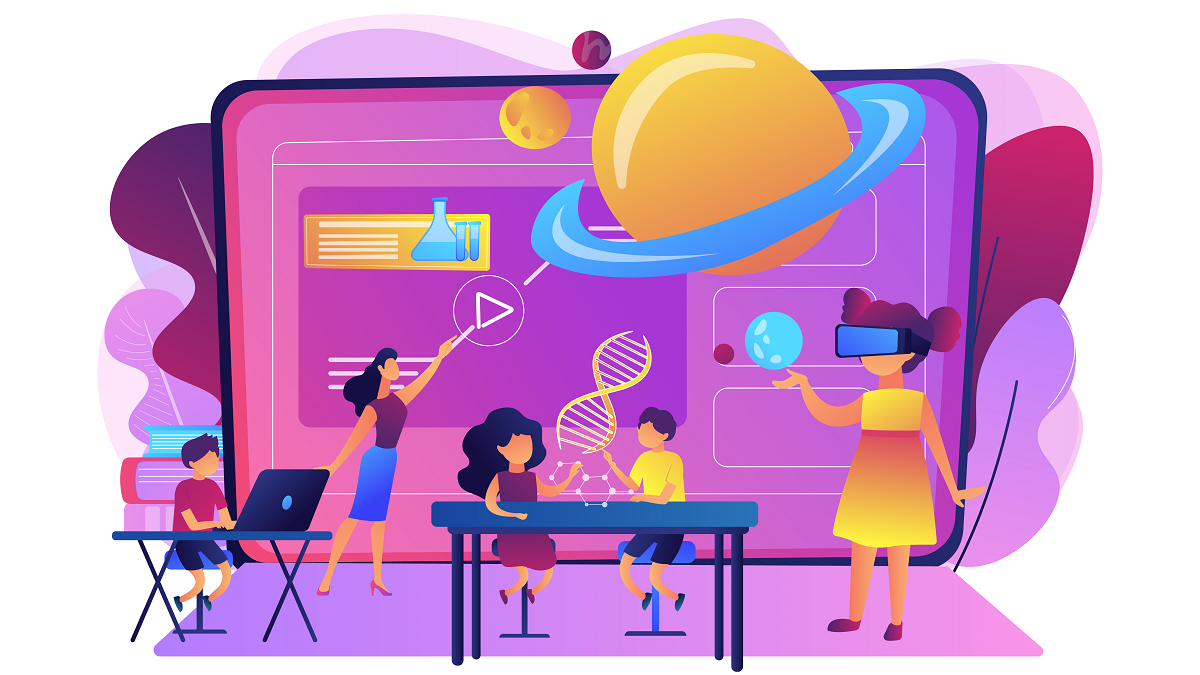
Gamification: More Than Just Fun
Gamification involves using game mechanics and principles in non-game contexts, like education. It's not about turning every lesson into a video game, but about integrating game elements that motivate and incentivize students to participate actively in their learning. There are definite benefits to gamification, including increased engagement and enhanced learning experiences. Let’s look at 7 benefits that can revolutionize the traditional classroom into a dynamic space of exploration and achievement.
1. Boosts Engagement
Games have a magical quality that captivates students' interest. When incorporated in instruction, this quality generally leads to increased engagement and participation. Gamified lessons transform learning into an adventure, encouraging students to dive into tasks with enthusiasm! Through challenges, rewards, and competition, students remain committed and excited to tackle learning objectives. Easy-to-use software like LYNX Whiteboard and MimioStudio™ allow teachers to create activities with a game-like feel such as drag-and-drop and matching activities. Teachers can add a timer to enhance the gaming elements that students respond to.
Watch the video to see how LYNX Whiteboard can be used on the interactive display:
2. Enhances the Learning Experience
Gamification encourages active learning. By solving problems, making decisions, and overcoming challenges in a game-like setting, students retain information better. This hands-on approach enhances understanding and helps students connect theoretical concepts to real-world scenarios. Most teachers incorporate some type of “game” in the classroom whether it’s as simple as a multiplication facts race or a team scavenger hunt of items related to a new concept or topic being learned. To further connect with what students are already doing at home, there are educational apps to simplify the planning process. CleverStore has learning apps for just about every subject and grade level, from coding to literacy skills. The games are vetted for safety and support National Common Core Standards.
3. Fosters Critical Thinking
Games often present students with puzzles and scenarios that require strategic thinking. This nurtures critical thinking skills as students analyze situations, formulate solutions, and adapt their approaches based on outcomes. Gamified learning promotes problem-solving and empowers students to think creatively. For students who are remote learning, games can be a welcome change of pace from reading presentations, docs, and PDFs. MimioConnect blended learning platform allows teachers to build game-like elements in activities that can be scored and used as assessments. Activities include drag-and-drop, labeling, and adding questions to videos and slides.
Watch the video to learn more about MimioConnect:
4. Nurtures Collaboration and Teamwork
Many games incorporate teamwork and collaboration, and gamified learning mirrors this aspect. Students often work together to achieve common goals, fostering a sense of teamwork and camaraderie. This collaborative spirit nurtures communication skills and teaches students the value of collective effort. For example, MyStemKits has a Sailboat Challenge that encourages students to design, and 3D print sails then test their speed. Watch the video to learn more:
5. Opportunities for Virtual Learning Adventures
Virtual reality (VR) takes gamified learning to new heights. VR simulations immerse students in virtual worlds where they can explore historical events, travel through space, or dissect complex scientific concepts. This technology offers experiential learning that bridges the gap between theory and practice.
6. Use Interactive Tools
Gamification extends beyond digital platforms. Interactive tools like 3D printers and robotics bring lessons to life. Students can design, create, and experiment, turning theoretical knowledge into tangible creations. When exploring a new concept or topic, students can work as teams to design a game including rules, instructions, and game tokens. Using a 3D printer, teams can create the game board, decorative pieces, and player tokens. Schedule a Game Night for parents and caregivers to play the games with their children. These hands-on experiences deepen understanding, fuel curiosity, and nurture problem solving skills.
Watch the video to learn how 3D printers can enhance student learning:
7. Benefits Teachers
Gamification isn't solely advantageous for students; it also benefits teachers. Learning games allow teachers to monitor students' progress, identify learning gaps, and adapt their teaching strategies accordingly. Real-time feedback from gamified activities enables personalized instruction that caters to individual needs.
Gamification is a powerful educational tool that transforms learning into an adventure. By integrating game elements, teachers can foster engagement, critical thinking, collaboration, and creativity among students. Platforms, software tools, and interactive technologies further enhance gamified learning experiences. Whether through digital quizzes and activities, virtual reality, or hands-on activities with 3D printers and robotics, gamification opens doors to a dynamic and effective approach to education. As teachers continue to embrace this dynamic method, students embark on a learning journey that is not only educational but also enjoyable and inspiring.
Explore award-winning software and solutions that can enhance teaching and learning in the classroom. Go to www.boxlight.com.



